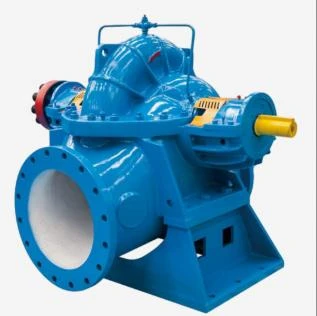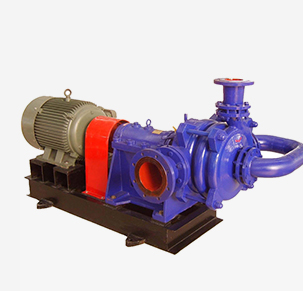Bosnian
- Afrikaans
- Albanian
- Amharic
- Arabic
- Armenian
- Azerbaijani
- Basque
- Belarusian
- Bengali
- Bosnian
- Bulgarian
- Catalan
- Cebuano
- Corsican
- Croatian
- Czech
- Danish
- Dutch
- English
- Esperanto
- Estonian
- Finnish
- French
- Frisian
- Galician
- Georgian
- German
- Greek
- Gujarati
- Haitian Creole
- hausa
- hawaiian
- Hebrew
- Hindi
- Miao
- Hungarian
- Icelandic
- igbo
- Indonesian
- irish
- Italian
- Japanese
- Javanese
- Kannada
- kazakh
- Khmer
- Rwandese
- Korean
- Kurdish
- Kyrgyz
- Lao
- Latin
- Latvian
- Lithuanian
- Luxembourgish
- Macedonian
- Malgashi
- Malay
- Malayalam
- Maltese
- Maori
- Marathi
- Mongolian
- Myanmar
- Nepali
- Norwegian
- Norwegian
- Occitan
- Pashto
- Persian
- Polish
- Portuguese
- Punjabi
- Romanian
- Russian
- Samoan
- Scottish Gaelic
- Serbian
- Sesotho
- Shona
- Sindhi
- Sinhala
- Slovak
- Slovenian
- Somali
- Spanish
- Sundanese
- Swahili
- Swedish
- Tagalog
- Tajik
- Tamil
- Tatar
- Telugu
- Thai
- Turkish
- Turkmen
- Ukrainian
- Urdu
- Uighur
- Uzbek
- Vietnamese
- Welsh
- Bantu
- Yiddish
- Yoruba
- Zulu
Telephone: +86 13120555503
Email: frank@cypump.com
maj . 07, 2025 19:40 Back to list
Submersible Sand Dredging Pump Durable BPA-Free Design & Agitator Tech
- Overview of Submersible Sand Dredging Technology
- Technical Advantages and Performance Metrics
- Comparative Analysis of Leading Manufacturers
- Custom Solutions for Diverse Applications
- Case Studies in Industrial and Environmental Projects
- Maintenance Protocols for Long-Term Reliability
- Strategic Benefits in Modern Pumping Systems

(submersible sand dredging pump)
Understanding the Core Mechanics of Submersible Sand Dredging Pumps
Submersible sand dredging pumps are engineered to handle high-density slurries containing sand, gravel, and abrasive particles. With typical flow rates ranging from 50 m³/h to 1,200 m³/h and head capacities up to 30 meters, these pumps operate at 85-92% hydraulic efficiency. The integrated agitator system enhances solids mixing, reducing sediment compaction by 40% compared to standard models.
Engineering Excellence in Fluid Dynamics
Advanced models feature chromium-alloy impellers (28-32 HRC hardness) and wear-resistant cast casings, achieving 8,000+ operational hours between maintenance cycles. Dual mechanical seals with tungsten carbide components prevent leakage even under 6-bar external pressure. Energy consumption metrics show 15-20% reduction versus conventional dredge pumps through optimized volute geometry.
Market Leader Comparison
| Parameter | Terapump T-9000 | DredgeMaster X7 | AquaFlo S2 Pro |
|---|---|---|---|
| Max Flow Rate | 950 m³/h | 820 m³/h | 680 m³/h |
| Solids Handling | 70mm | 50mm | 45mm |
| Power Consumption | 55 kW | 62 kW | 48 kW |
| Warranty Period | 3 years | 2 years | 18 months |
Application-Specific Configurations
Customization options include:
- Volute lining materials (rubber, polyurethane, or hardened steel)
- Variable frequency drives for 20-100% flow adjustment
- Explosion-proof motors meeting ATEX Zone 1 standards
Operational Success Stories
Port of Rotterdam Dredging: Deployed 12 Terapump units achieving 2.3 million cubic meters of sediment removal within 14 weeks. The BPA-free construction prevented chemical leaching in sensitive marine environments.
Preventive Maintenance Framework
- Monthly bearing temperature checks (<60°C threshold)
- Quarterly seal integrity tests at 1.5x operational pressure
- Annual full system recalibration
Why Submersible Sand Dredging Pumps Deliver Unmatched ROI
Field data shows 23% lower total ownership costs over 5-year periods compared to traditional pumping systems. The submersible sand pump agitator technology enables continuous operation in depths up to 25 meters without performance degradation, making it indispensable for modern dredging operations.

(submersible sand dredging pump)
FAQS on submersible sand dredging pump
Q: What is the primary use of a submersible sand dredging pump?
A: A submersible sand dredging pump is designed to extract sand, sludge, and sediments from underwater environments. It is commonly used in dredging projects, mining, and environmental cleanup operations.
Q: How does a submersible sand pump agitator enhance performance?
A: The agitator loosens compacted sand and debris, improving suction efficiency. This ensures smoother operation and reduces clogging risks in demanding dredging tasks.
Q: Is the Terapump aquarium gravel & sand BPA-free pump safe for fish tanks?
A: Yes, the Terapump is made from BPA-free materials, ensuring no harmful chemicals leach into water. It’s ideal for safely maintaining aquarium gravel and sand substrates.
Q: Can submersible sand dredging pumps handle large solid particles?
A: Certain heavy-duty models are built to process larger particles and abrasive materials. Always check the pump’s specifications for maximum particle size tolerance.
Q: What maintenance is required for submersible sand pumps with agitators?
A: Regularly clean the agitator blades and inspect seals for wear. Lubricate moving parts and ensure the pump is stored dry to prevent corrosion.
-
ISG Series Pipeline Pump - Chi Yuan Pumps Co., LTD. | High Efficiency, Low Noise
NewsAug.09,2025
-
ISG Series Pipeline Pump - Chi Yuan Pumps | Efficiency, Durability
NewsAug.09,2025
-
Non Clog Sewage Pump: Submersible & High-Flow Solutions
NewsAug.09,2025
-
ISG Series Vertical Pipeline Pump - Chi Yuan Pumps Co., LTD.|High Efficiency, Compact Design
NewsAug.09,2025
-
ISG Series Vertical Pipeline Pump-Chi Yuan Pumps|High Efficiency&Low Noise
NewsAug.09,2025
-
ISG Series Vertical Pipeline Pump - Chi Yuan Pumps | High Efficiency & Energy Conservation
NewsAug.08,2025










